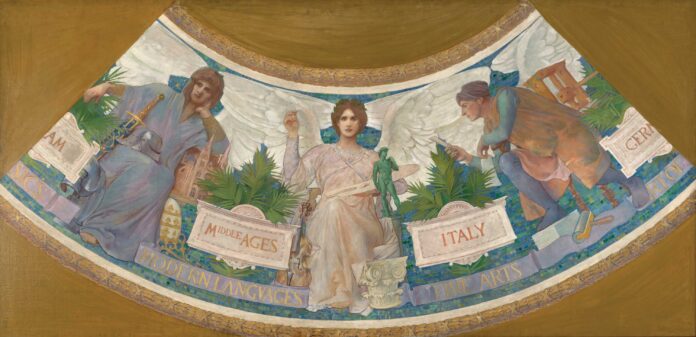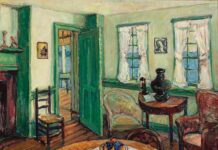
After years of research and conservation, the Yale University Art Gallery is ready to present the innovative exhibition “The Dance of Life: Figure and Imagination in American Art, 1876–1917.”
This is the first major project to examine the vitality and expressivity of the human figure in working studies for public art made during what some scholars call “the American Renaissance,” and what most of us consider “the Gilded Age.”
At a Glance:
The Dance of Life: Figure and Imagination in American Art, 1876–1917
Yale University Art Gallery
New Haven, Connecticut
artgallery.yale.edu
Through January 5, 2025
In their murals and sculptures, many artists focused on the human form, using it to project the age’s ideals: the power of democracy over autocracy, of innovation over stagnation, of a stable future over the stormy past epitomized by the just-ended Civil War.
On view are more than 100 artists’ studies created for large commissions at civic institutions nationwide, ranging from pencil drawings and pastels to bronzes and oil paintings. Among the talents highlighted are such famous names as Edwin Austin Abbey, Edwin Blashfield, Daniel Chester French, Violet Oakley, Augustus Saint-Gaudens, and John Singer Sargent, but also lesser known ones like Meta Warrick Fuller, Evelyn Longman, and Gari Melchers.
In their preparatory studies for commissions that would adorn hundreds of new public spaces — libraries, universities, courthouses, museums, state capitols, train stations, and parks — these artists used the figure to communicate with their audiences about community, memory, and identity. Organizing curator Mark D. Mitchell notes that these men and women “practiced in busy studios with models, apprentices, guests, and other artists coming and going. They lived in a sociable age, in which membership in organizations and clubs helped them gain commissions and provided venues to seek advice and ideas. They were in constant communication with one another, offering and receiving support for their work.”
Anchoring the exhibition are two celebrated landmarks — the Boston Public Library and the Pennsylvania State Capitol in Harrisburg. Each site encompasses commissions by multiple painters and sculptors, but both contain important mural programs by Abbey, whose estate of 3,000 artworks came to Yale in 1937 and has formed this project’s foundation. Other key sites examined include the Library of Congress in Washington, D.C., and Boston’s Trinity Church.
Accompanied by a 304-page catalogue published by Yale University Press, “The Dance of Life” features loans of rarely seen artworks from museums across the U.S. It closes with Abbey’s spectacular “The Hours,” a half-scale oil study for a monumental ceiling in the Pennsylvania State Capitol that has been painstakingly conserved and will be exhibited for the first time.







